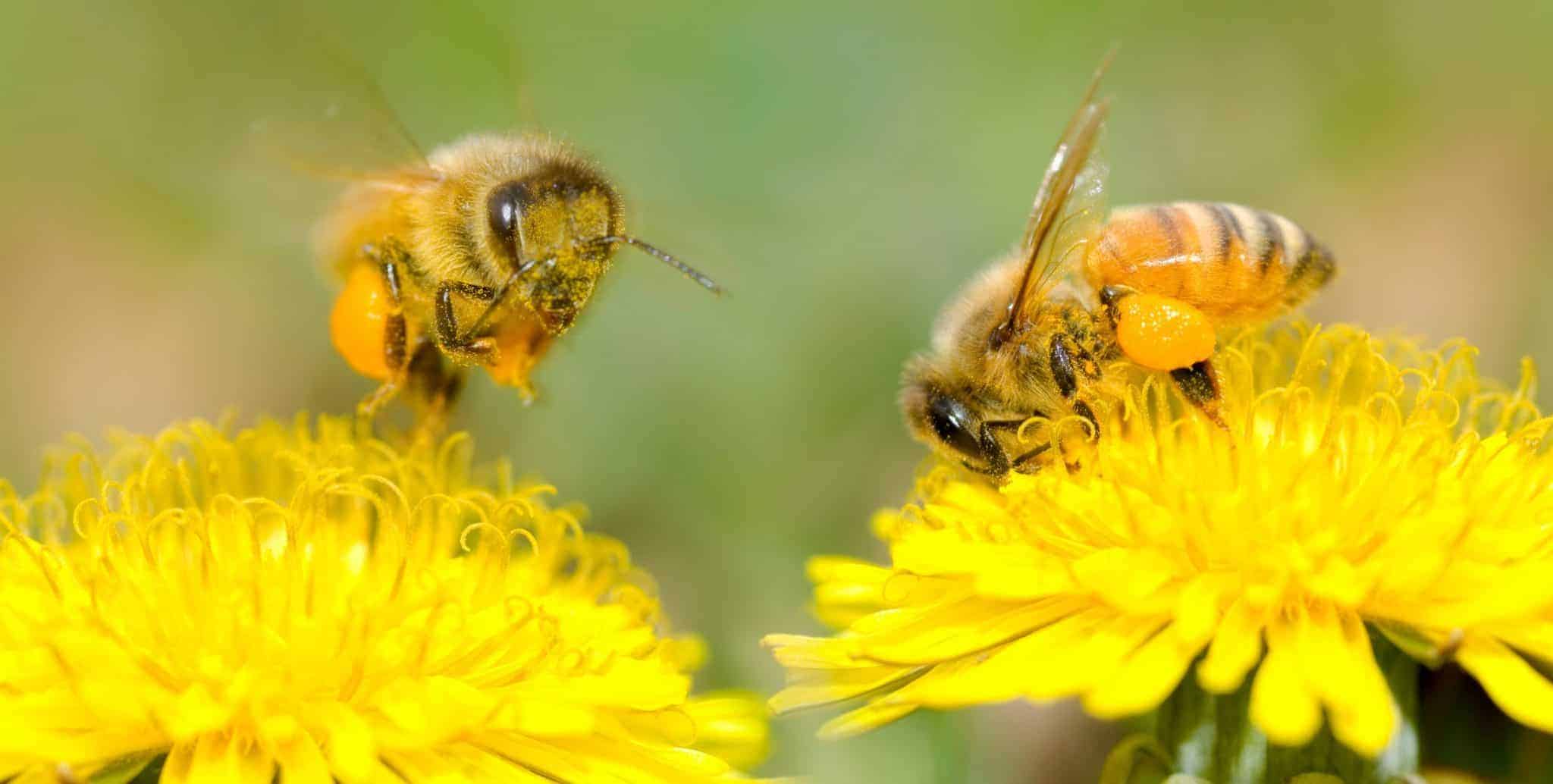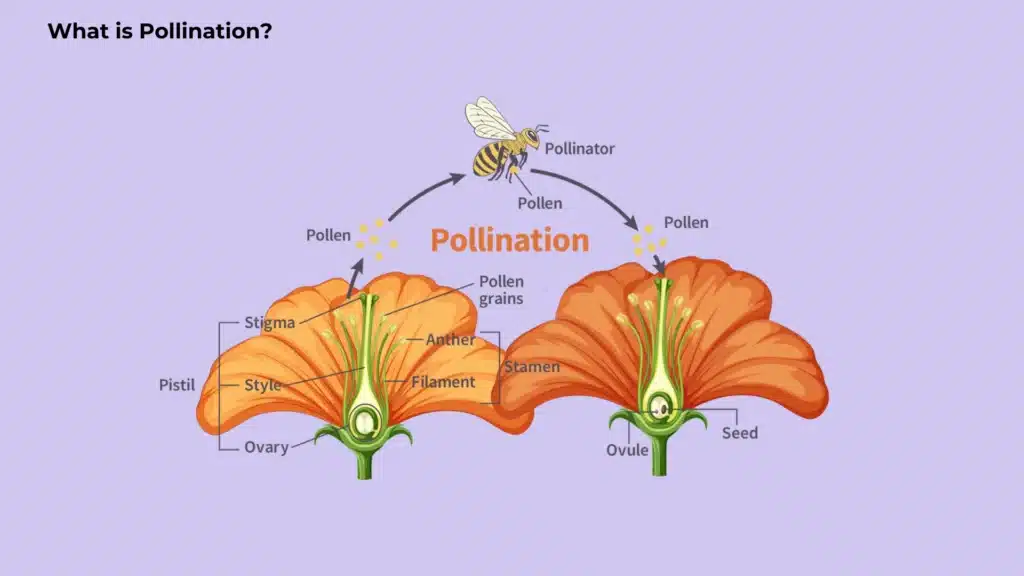The Buzz About Pollination: A Vital Process for Life on Earth

Pollination, the transfer of pollen from the male part of a flower (anther) to the female part (stigma), is a fundamental process that underpins the reproduction of flowering plants and, consequently, the health and stability of countless ecosystems. While often taken for granted, this intricate interaction between plants and their pollinators is responsible for the fruits, vegetables, and seeds that sustain much of life on Earth, including our own. Understanding the mechanisms, agents, and challenges facing pollination is crucial for ensuring food security, biodiversity conservation, and the overall well-being of our planet.
The Mechanics of Pollination:
At its core, pollination is about plant reproduction. Flowering plants, or angiosperms, rely on this process to fertilize their ovules, which then develop into seeds. These seeds, in turn, grow into new plants, continuing the cycle of life. The process can be broadly categorized into two main types:
Self-Pollination: This occurs when pollen is transferred from the anther to the stigma within the same flower or between different flowers on the same plant. While it guarantees reproduction, self-pollination often leads to reduced genetic diversity and, consequently, weaker offspring that are less adaptable to environmental changes.
Cross-Pollination: This involves the transfer of pollen from the anther of one plant to the stigma of another plant of the same species. Cross-pollination promotes genetic diversity, leading to healthier, more resilient plant populations.

The success of cross-pollination depends heavily on the agents that facilitate the transfer of pollen. These agents, known as pollinators, can be either abiotic (non-living) or biotic (living).
The Agents of Pollination: A Diverse Cast of Characters:

Abiotic Pollination:
- Wind Pollination (Anemophily): Plants that rely on wind for pollination, such as grasses, oaks, and ragweed, typically produce copious amounts of lightweight, easily dispersed pollen. Their flowers are often small, inconspicuous, and lack nectar or strong scents. The stigmas are often feathery or branched to efficiently capture airborne pollen. This method is less precise than biotic pollination, requiring a large pollen output to ensure success.
- Water Pollination (Hydrophily): This is less common than wind pollination and is primarily found in aquatic plants. Pollen is either released directly into the water or floats on the surface to reach the stigma. Water-pollinated plants often have specialized structures to protect their pollen from water damage.

Biotic Pollination:
Insect Pollination (Entomophily): Insects are the most common group of biotic pollinators, and their relationship with flowering plants is a prime example of co-evolution. Different insect groups specialize in pollinating specific types of flowers.
- Bees (Melittophily): Bees are arguably the most important group of pollinators. They are attracted to bright, colorful flowers (often yellow, blue, or purple) with sweet fragrances and nectar guides (patterns that direct them to the nectar). Bees are also important for collecting pollen to feed their larvae.
- Butterflies (Psychophily): Butterflies are attracted to brightly colored, often red or orange, flowers with long, tubular shapes that accommodate their long proboscis. These flowers often have a light, sweet fragrance.
- Moths (Phalaenophily): Moths are typically nocturnal pollinators, attracted to white or pale-colored flowers with strong, sweet fragrances that are easily detectable in the dark. These flowers often open at night.
- Beetles (Cantharophily): Beetles are among the earliest pollinators and are attracted to large, sturdy flowers with dull colors and strong, often spicy or fruity, odors.
- Flies (Myophily and Sapromyophily): Some flies are attracted to flowers that mimic the appearance and smell of rotting meat or dung, while others are attracted to more conventional floral scents.
Bird Pollination (Ornithophily): Birds, particularly hummingbirds in the Americas and sunbirds in Africa and Asia, are important pollinators of brightly colored (often red or orange) flowers with abundant nectar. These flowers typically lack strong fragrances, as birds have a poor sense of smell.
Bat Pollination (Chiropterophily): Bats are nocturnal pollinators, attracted to large, white or pale-colored flowers with strong, musty or fermented odors. These flowers often open at night and produce copious amounts of nectar.
Other Animal Pollinators: In addition to the above, various other animals, including small mammals, reptiles, and even snails, can act as pollinators.
The Importance of Pollination: A Cornerstone of Ecosystems and Human Society:
Pollination is not merely a biological process; it is a critical ecological service with far-reaching consequences.
- Food Security: A significant portion of the world’s food crops, including fruits, vegetables, nuts, and seeds, rely on pollination for their production. The decline of pollinators poses a serious threat to global food security.
- Biodiversity: Pollination is essential for the reproduction of many wild plants, which form the foundation of terrestrial ecosystems. The loss of pollinators can lead to a decline in plant diversity, impacting the animals that depend on them for food and shelter.
- Ecosystem Stability: Pollination contributes to the overall stability and resilience of ecosystems. Healthy pollinator populations help maintain plant diversity and prevent the spread of invasive species.
- Economic Value: The economic value of pollination services is estimated to be in the hundreds of billions of dollars annually. Pollinators contribute significantly to agricultural productivity and the livelihoods of farmers worldwide.
Threats to Pollinators and Pollination:
Unfortunately, pollinator populations are declining globally due to a variety of factors:
- Habitat Loss: The destruction and fragmentation of natural habitats, such as meadows, forests, and wetlands, reduces the availability of food and nesting sites for pollinators.
- Pesticide Use: Neonicotinoid insecticides, in particular, have been linked to declines in bee populations. These chemicals can affect pollinators’ navigation, foraging behavior, and reproduction.
- Climate Change: Changes in temperature and precipitation patterns can disrupt the timing of flowering and pollinator activity, leading to mismatches and reduced pollination success.
- Diseases and Parasites: Introduced diseases and parasites, such as the Varroa mite in honeybees, can weaken pollinator populations and make them more susceptible to other stressors.
- Monoculture Agriculture: The practice of growing large areas of a single crop reduces the diversity of food sources available to pollinators.
Conservation Efforts: Protecting Our Pollinators:
Addressing the threats to pollinators requires a multifaceted approach:
- Habitat Restoration: Protecting and restoring natural habitats, such as creating pollinator gardens and planting native wildflowers, provides essential food and nesting resources.
- Sustainable Agriculture: Reducing pesticide use, promoting crop rotation, and incorporating flowering plants into agricultural landscapes can create more pollinator-friendly farming practices.
- Climate Change Mitigation: Reducing greenhouse gas emissions and implementing adaptation strategies can help buffer pollinators from the impacts of climate change.
- Disease Management: Developing and implementing strategies to control diseases and parasites in pollinator populations is crucial for their long-term health.
- Public Awareness: Educating the public about the importance of pollinators and the threats they face can encourage individuals to take action to protect them.
Conclusion:
Pollination is an indispensable process that underpins the health of our ecosystems and the sustainability of our food supply. By understanding the complex interactions between plants and their pollinators, we can take steps to protect these vital creatures and ensure the continued provision of this essential ecological service for generations to come. The future of our planet depends on the health of our pollinators, and it is our responsibility to act now to safeguard their well-being.
Frequently Asked Questions (FAQ) about Pollination:
Q: What is the difference between pollination and fertilization?
A: Pollination is the transfer of pollen from the anther to the stigma. Fertilization is the fusion of the male gamete (from the pollen) with the female gamete (in the ovule) to form a zygote. Pollination is a prerequisite for fertilization, but it doesn’t guarantee it.
Q: Are all flowers pollinated by bees?
A: No. While bees are important pollinators, many flowers are pollinated by other insects, birds, bats, wind, or water. The type of pollinator depends on the flower’s characteristics, such as its color, shape, and scent.
Q: What are some easy ways I can help pollinators in my own backyard?
A: You can help pollinators by:
- Planting native wildflowers and flowering plants that provide food and shelter.
- Avoiding the use of pesticides, especially neonicotinoids.
- Providing a water source, such as a shallow dish with pebbles.
- Leaving some areas of your yard undisturbed to provide nesting sites.
- Educating your neighbors about the importance of pollinators.
Q: What is a pollinator garden?
A: A pollinator garden is a garden specifically designed to attract and support pollinators. It typically includes a variety of native flowering plants that bloom at different times of the year, providing a continuous source of food for pollinators.
Q: Are honeybees the only important pollinators?
A: While honeybees are commercially important for pollinating crops, native pollinators, such as bumblebees, solitary bees, and other insects, are also crucial for maintaining biodiversity and pollinating wild plants. In many ecosystems, native pollinators are more efficient and effective than honeybees.
Q: What is the role of climate change in pollinator decline?
A: Climate change can disrupt the timing of flowering and pollinator activity, leading to mismatches and reduced pollination success. Changes in temperature and precipitation patterns can also affect pollinator habitat and food availability. Extreme weather events, such as droughts and floods, can further stress pollinator populations.
Q: What is the economic value of pollination?
A: The economic value of pollination services is estimated to be in the hundreds of billions of dollars annually. Pollinators contribute significantly to agricultural productivity and the livelihoods of farmers worldwide.
Q: What are neonicotinoid insecticides and why are they harmful to pollinators?
A: Neonicotinoid insecticides are a class of systemic insecticides that are widely used in agriculture. They can be absorbed by plants and translocated to all parts, including the pollen and nectar. These chemicals can affect pollinators’ navigation, foraging behavior, and reproduction, leading to population declines.
Q: What is being done at a governmental level to protect pollinators?
A: Many countries and regions have implemented policies to protect pollinators, including:
- Restrictions on the use of neonicotinoid insecticides.
- Funding for pollinator research and conservation programs.
- Development of pollinator-friendly habitat on public lands.
- Educational campaigns to raise awareness about pollinator conservation.
Q: Where can I learn more about pollination and pollinator conservation?
A: Many organizations offer information and resources on pollination and pollinator conservation, including:
- The Xerces Society for Invertebrate Conservation
- The Pollinator Partnership
- The U.S. Fish and Wildlife Service
- Your local university extension office


